Cinquefoil goose: description and cultivation
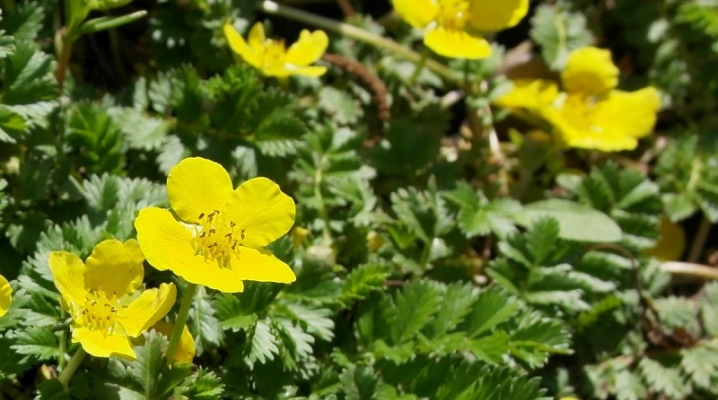
Cinquefoil is a unique herb that is characterized by a large number of varieties. Potentilla goose is considered its most common type. The plant has not only decorative, but also medicinal properties, therefore it is grown in many private territories.
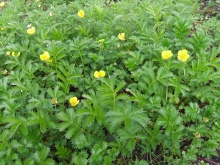
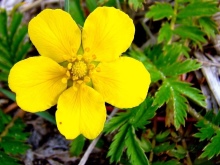
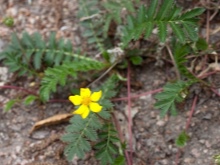
Peculiarities
Potentilla anserina is a herbaceous perennial member of the Rosaceae family. Other names of the plant are also known, for example, "road", "toad", "convulsive grass". The appearance of the bush is rather unusual, it has sprawling and rooting stems. In length, the shoots reach about 0.7 meters. The description of the perennial roots testifies to their thickness and many heads. In some parts of the stem, thin tendrils branch off, which also take root in the soil. The foliage of the "convulsive grass" is basal, has intermittent featheriness. One plant can contain from 9 to 2 dozen leaves. The top of the velvet leaf plate is green and the bottom is silver.
The exit of the shoot is concentrated on the axil of the leaf, and flowers are located on it. The latter have 5 petals and sit singly on the stem. The flowering phase of the toad is characterized by the appearance of golden yellow flowers with a double calyx, in which the pistil and stamens are located. The peculiarity of Potentilla anserina is to exude a pleasant aroma. The culture blooms from May to the end of summer.
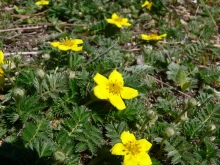
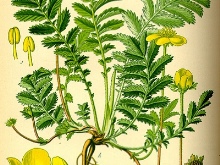

The roots of the roadhouse contain in their composition a large percentage of tanning and wax elements, starch, acids, flavonoids, oils. Due to the presence of useful components, decorative cinquefoil is often used in the treatment of ailments with folk remedies. The plant affects the body as follows:
- stops seizures and reduces their intensity;
- relieves pain syndrome;
- stops bleeding;
- has a diuretic, astringent, antiseptic effect;
- relieves the inflammatory process.
Broths and tinctures of toothache can be used externally, namely with rinsing during toothaches and inflammation in the oral cavity. Perennial baths eliminate rashes, skin inflammations, eliminate ulcers.
For this purpose, the grass is harvested from May to August, and the roots - in the autumn.
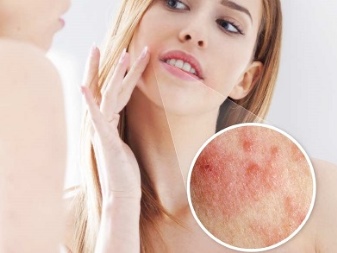

Where does it grow?
People who plan to collect cinquefoil should be aware not only of its appearance, but also of the places where it grows. This herb is recognized as a Eurasian vegetation, so it can be found throughout Europe. Quite often, "convulsive grass" grows in the Caucasus, Asia, and also in Russia.
Potentilla goose harvesting can be carried out on the territory of Polesie, the Urals, Siberia and Altai. In its natural environment, this perennial loves to settle on swampy and sandy soil.

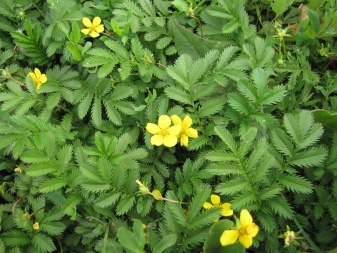
How to plant?
Cinquefoil goose can grow on various types of soil, but loamy soil is considered the best option for it. The soil should be characterized by looseness, weak acidity, good drainage and fertilization. Perennial does not differ in demanding growing conditions. A bright spot that is shaded at noon is considered the best site for a toad.
The seeds of this type of plant should be sown in the fall, directly into the ground, so that they undergo a natural process of stratification during the winter. In the spring, the seedlings should emerge, after which they should be planted.In order not to risk the state of the seed, sowing of seeds can be postponed to February, March. In this case, future Potentilla plants germinate under polyethylene at a temperature of 15-18 degrees Celsius.
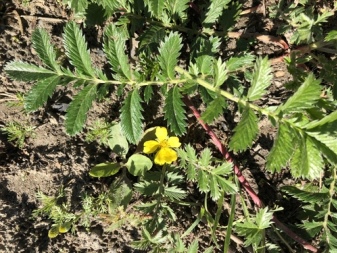
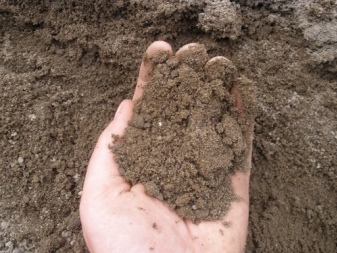
After the leaves appear at the seedlings, you can start picking them in separate containers. The growth of seedlings is characterized by sluggishness, but at the end of summer they can already begin to be planted in open ground in permanent places. In this case, the florist must maintain a distance between crops up to 0.8 meters. In advance, it is worth preparing a hole 0.5 meters deep and laying a drainage layer on its bottom.
Drainage can consist of broken bricks, crushed stone. On top of this layer, you need to lay the next one, which consists of a mixture of leafy soil with humus, river sand. It is also recommended to add a little mineral fertilizer to the soil mixture. The seedling should be placed in the planting hole very carefully and sprinkled with soil, subsequently compacting it a little. The root collar of the "convulsive grass" should not fall below ground level.
After planting, the plant is watered and mulched with sawdust, dry bark and straw.

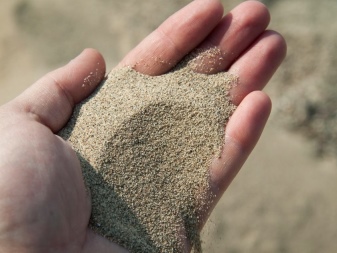
Correct care
Caring for a decorative roadway does not imply any difficulties. Gardeners without experience will be able to grow this plant. The main thing is to timely and moderately water the toad, fertilize, do sanitary pruning and eliminate weeds.
Watering
Active growth and abundant flowering of Potentilla goose are possible provided that the soil is well moistened. If the summer season turned out to be rainy, then additional irrigation of the perennial is not required. In dry weather, watering should be done twice every 7 days. It is not recommended to allow the soil to dry out, as this can negatively affect the state of the toad.
Cold, ice-cold water is not used when watering; it can damage the roots. It is best to irrigate the grass with a settled warm liquid. At the end of the irrigation procedure, it is recommended to loosen the soil around Potentilla. In the evening it will be useful to sprinkle the "convulsive grass". Seedlings require special watering - they are irrigated quite often, pouring about 10 liters of liquid under each bush.
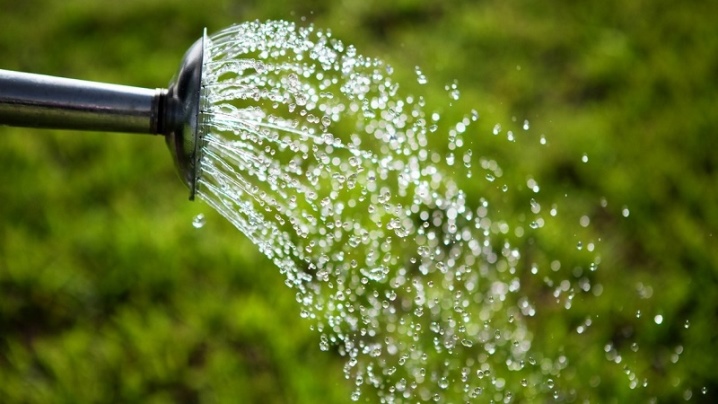
Fertilizer
During the flowering phase, the road builder responds well to top dressing. When planting, it is recommended to add ash or mineral fertilizer. Next spring, Potentilla can be fed in this way:
- during active spring growth, from 30 to 40 grams of potassium sulfide, as well as phosphate, previously diluted in 10 liters of water, are added to the soil (this amount of fertilizer is calculated for 1 bush;
- during the period of bud formation, a phosphorus-potassium complex of fertilizers should be applied to the soil, following the instructions.
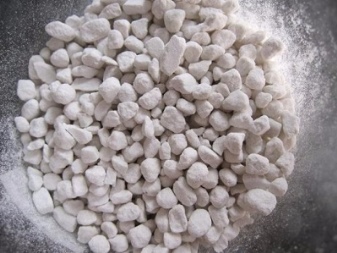
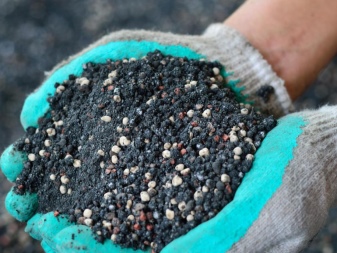
Pruning
To maintain the decorative appearance of goose cinquefoil, it is worth regularly pruning its crown. The procedure is best done in the spring, before the buds begin to open. In this case, the shoots are shortened by a third, forming an attractive image of a perennial. Do not forget about removing dried, broken branches and those that grow inward.
Most often, goose cinquefoil is cut in the form of a ball or pillow. Rejuvenation stimulates flowering activity as well as shoot growth.
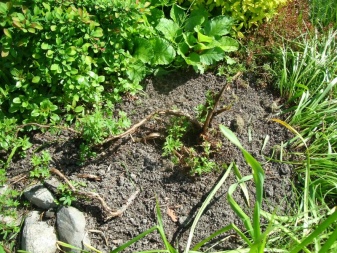
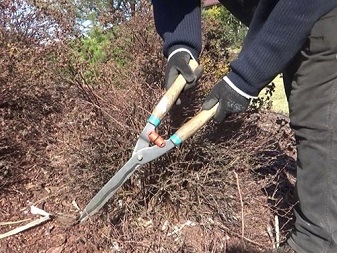
Preparing for winter
Herbaceous perennial does not need shelter for the winter period, since it is characterized by frost resistance and endurance. It is recommended to cover only young bushes that were planted in the fall.
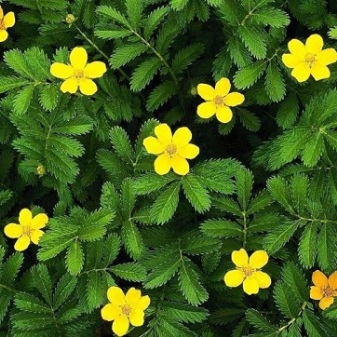
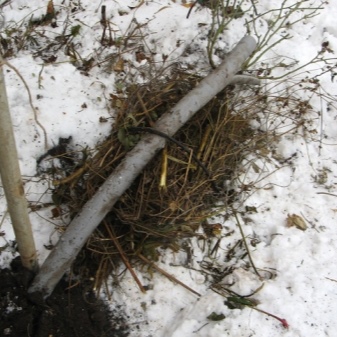
Reproduction methods
Since cinquefoil goose is a perennial, ground leaf rosettes are formed from its seeds already in the first year of its existence. Upon reaching the age of two, the grass is ready to begin reproduction. The toad can reproduce in 2 ways:
- vegetative, that is, using a ground rooted shoot;
- sexual - seeds.
The first option is considered more effective, since the roadway rooted well with the help of a creeping shoot or a piece of root tuber. The vegetative propagation option promotes the formation of dense thickets.
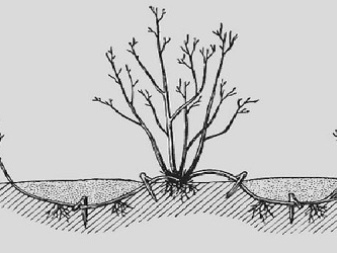
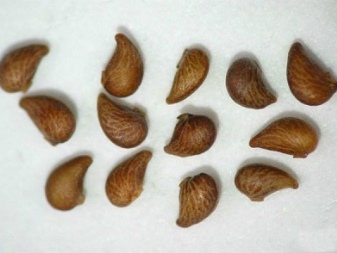
Diseases and pests
Not only is Potentilla anserina easy to care for, but also the fight against parasites and diseases. This representative of the flora rarely suffers from attacks of parasites and ailments. The roadway is not often affected by rust, powdery mildew, spotting, but such cases do happen. After detecting the problem, the perennial should be treated with a fungicide, for example, Bordeaux liquid, colloidal sulfur.
A scoop can harm the goose cinquefoil. However, with timely detection and spraying with "Fufan", "Decis" or "Fitoverm", it is quite possible to save the plant.
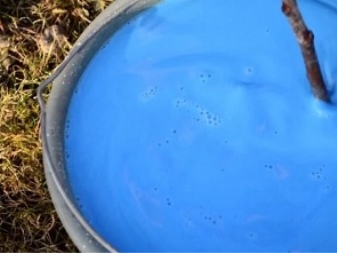
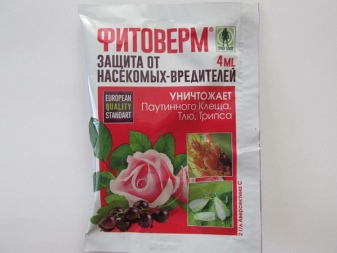
Examples in landscape design
- Cinquefoil goose is not only an effective medicine, but also a plant that can beautify the territory. Unusual appearance of "convulsive grass" will add zest to the design of the site. A perennial is often used for the purpose of landscaping a garden area, giving it structure and organicness.


- This representative of the flora can become a bright part of an alpine slide or a part of a flower garden. In a flowerbed with flowers, the roadway looks quite organic, it is often planted in the center of the composition. According to landscape designers, Potentilla anserina can be planted along with other species of the family. In this case, a multi-colored stepped slide will appear on the territory.
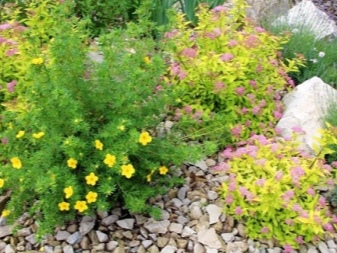

- When planting "convulsive grass" as a single plant, it is better to sow the area with lawn grasses or sprinkle with pebbles. Cinquefoil goose is considered a non-aggressive plant, it "gets along well" with other representatives of the flora. This perennial can be planted near coniferous and deciduous trees, flowering shrubs, lavender, barberry and catnip.
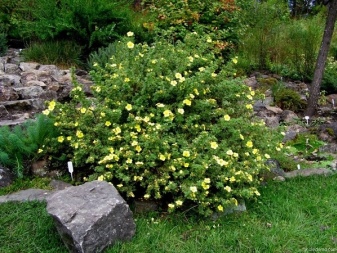
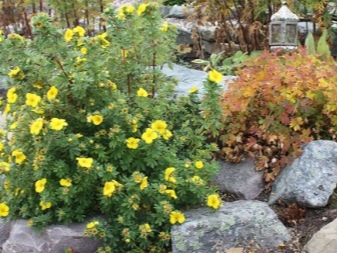
A medicinal plant with a pleasant aroma is unpretentious in care, it can be easily planted and propagated. Irrigation, fertilization and pruning will allow each toad owner to enjoy its decorative qualities for a long time.
For information on how to properly cut the cinquefoil, see the next video.



































































The comment was sent successfully.